Old Sun Community College Fourth Floor
The Fourth Floor of Old Sun Community College (OSCC). Click on the triangle to load the point cloud. Labels on the point cloud indicate past room functions during Old Sun’s time as a residential school. This floor originally contained the senior boys and girls dormitories. This floor currently serves as the broadcasting home of CFXX-FM.

“Indian culture is a contradiction in terms. They are uncivilized. The aim of education is to destroy the Indian.” – Nicholas Flood Davin Report, 1879
Today the fourth floor of Old Sun houses a practical training classroom for nursing (north side), along with a staff office. The south side has been renovated into additional rooms and currently serves as the broadcasting home of CFXX-FM – Siksika Radio.
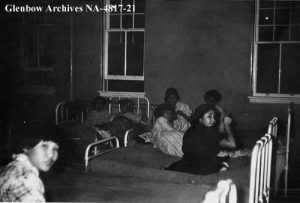
When in operation as a residential school, this floor was used for the senior boys’ and girls’ dormitories, as well as the adjacent sleeping quarters for supervisory staff. As with other floors, the boys’ area was located on the south side of the school, and the girls’ dormitory on the north side. The senior dormitories were for students aged fourteen and above. The number of beds in these dorms likely changed through the years, but to accommodate the maximum capacity of 142 students in the 1960s the dorms would have had around 30 beds.
There was a small sink and a bathroom attached to the dorms, and a series of storage cupboards were placed along the walls adjacent to the doorway. As with younger children, new arrivals were assigned a number and corresponding school uniform and asked to turn over their personal belongings to staff. These items were then stored in the cupboards for the duration of each student’s stay at the school.
Student behavior was monitored from an adjacent staff room which contained a window overlooking the dormitory. Fire escapes leading to the roof and back parking lot could be accessed from the west wall of the dormitories. As Naiistootapinohmahka, Larry Water Chief remembers here, students would sometimes sneak out of the school via fire escapes, oftentimes to steal food or go into town.
Old Sun Senior Dormitories
The north side, which served as the Sr. girls’ dormitory, was the location for the first Siksika museum which was later moved to Blackfoot Crossing Historical Park. The addition of the museum was fundamental for repatriating archaeological artifacts to the Siksika Nation and continuing important cultural ceremonies and traditions, which the residential schools sought to abolish. When a new museum facility was opened on the Nation, this area was converted into a teaching space for the college. Most recently, it has been used for practicums that form part of the nursing program, which restarted at the college in the fall 2022.
The fourth-floor dormitories originally housed students older than 14 years of age. There was no access between the boys’ and girls’ dormitories on this floor, but students would sometimes find ways to communicate through the single wall or by sneaking out via the fire escapes. A former student of the school, Gwendora Bear Chief, recounts a story from her time in the Sr. Girls’ dorm where, when changing, the girls could hear loud giggling from the boys’ side. Further investigations revealed that the boys had drilled a small hole through the wall to spy on the girls – evidenced by the fact that they could see one boys’ eye looking through. The girls blew air into the hole surprising the boys. Gwendora remarked that despite all the bad things and abuse there was in the school, that there are some good memories because they were all just children who wanted to be children.
The Dangers of Fire

While fire escape stairways were installed at Old Sun Indian Residential School, only junior students could access them directly from their dormitory. Senior students had to follow a more circuitous and less direct route to safely exist the building during an emergency. For example, senior female students had to pass through staff bedrooms to reach the exterior stair access, and the senior boys had to travel through a storge room (also called a bale room) to reach a fire exit. It has been suggested that a lack of direct access for senior students was intentionally done to reduce unwanted visitors (friends, relatives, family members) from accessing the senior dormitories from the outside. Preventative measures also involved the locking of doors which limited routes of escape (Blackfoot Agency, Vol. 6360, Reel C-8714, 1932).
Left click and drag your mouse around the screen to view different areas of each room. If you have a touch screen, simply drag your finger across the screen. Your keyboard's arrow keys can also be used. Travel to different areas of the fourth floor by clicking on the floating arrows.
This image gallery shows historic and modern photos of Old Sun College's fourth floor. Click on photos to expand and read their captions. If you have photos of the fourth floor at Old Sun that you would like to submit to this archive, please contact us at irsdocumentationproject@gmail.com.

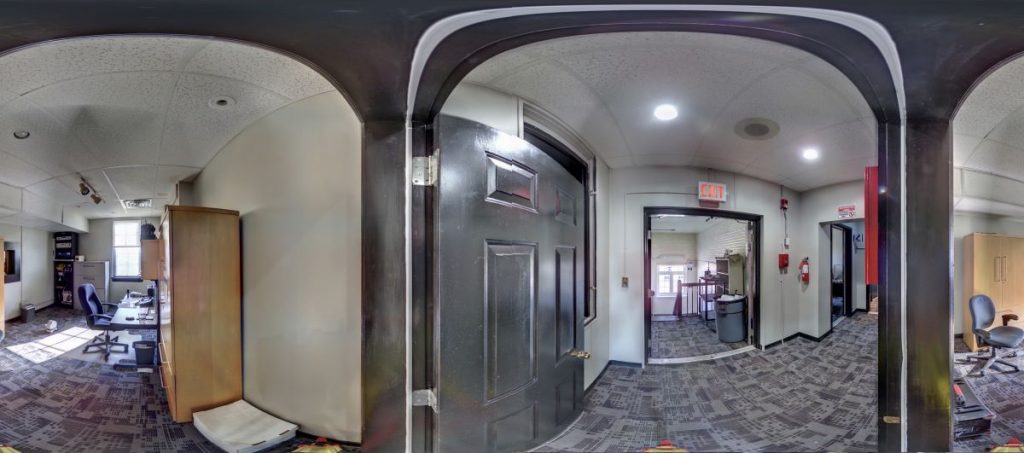
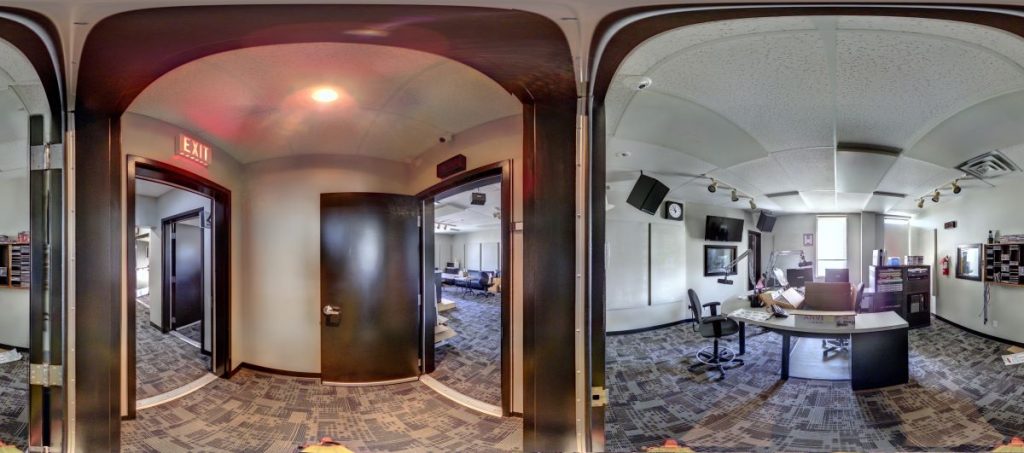
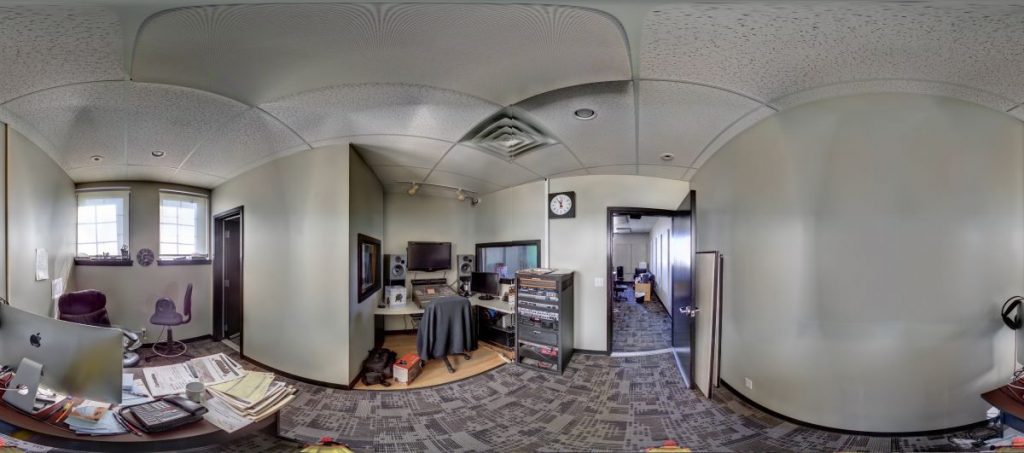

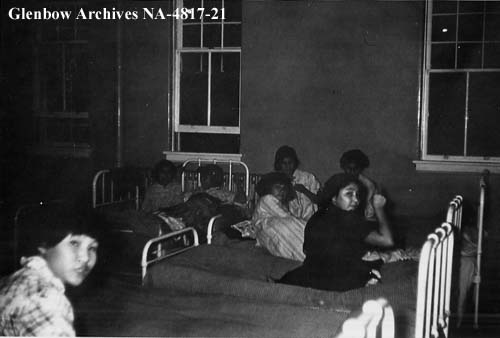
![Exterior of Old Sun School, showing the forth floor is slightly shorter than the lower levels of the school. [193-?]. P7538-1021 from the General Synod Archives, Anglican Church of Canada.](https://irs.preserve.ucalgary.ca/wp-content/uploads/P7538-1021.jpeg)
![Exterior of Old Sun School, the last window on either side of the fourth floor was for the staff room, and the senior dormitories were in the middle of the floor. [193-?]. P75-103-S7-188 from the General Synod Archives, Anglican Church of Canada.](https://irs.preserve.ucalgary.ca/wp-content/uploads/2021/07/P75-103-S7-188.jpeg)

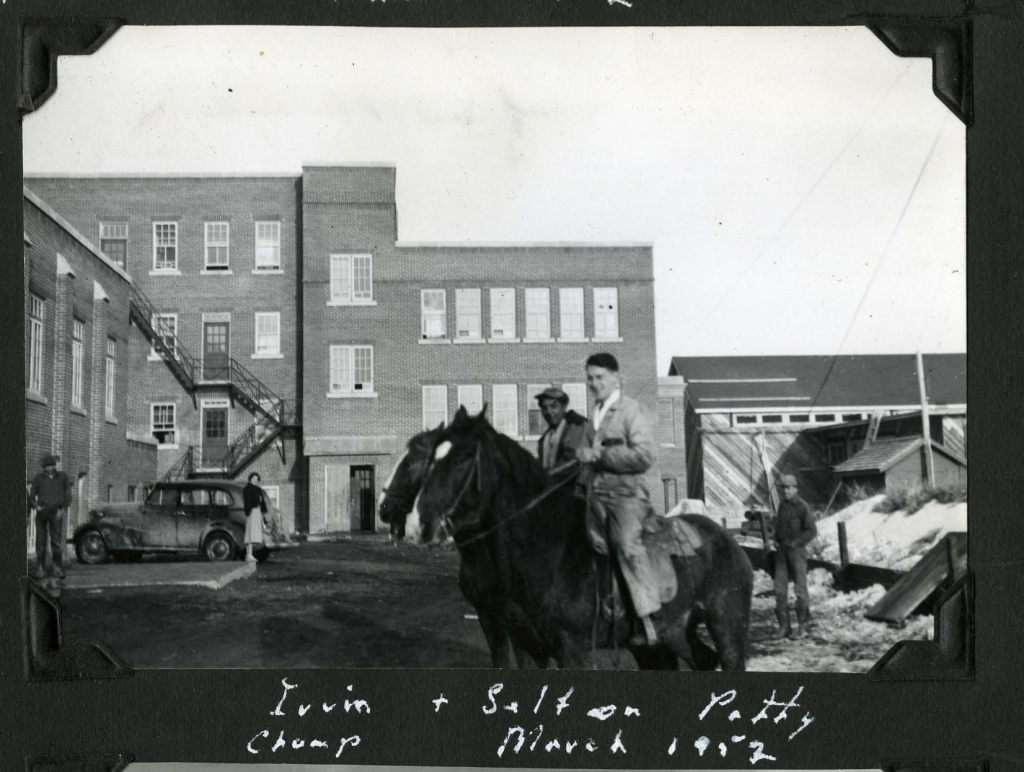
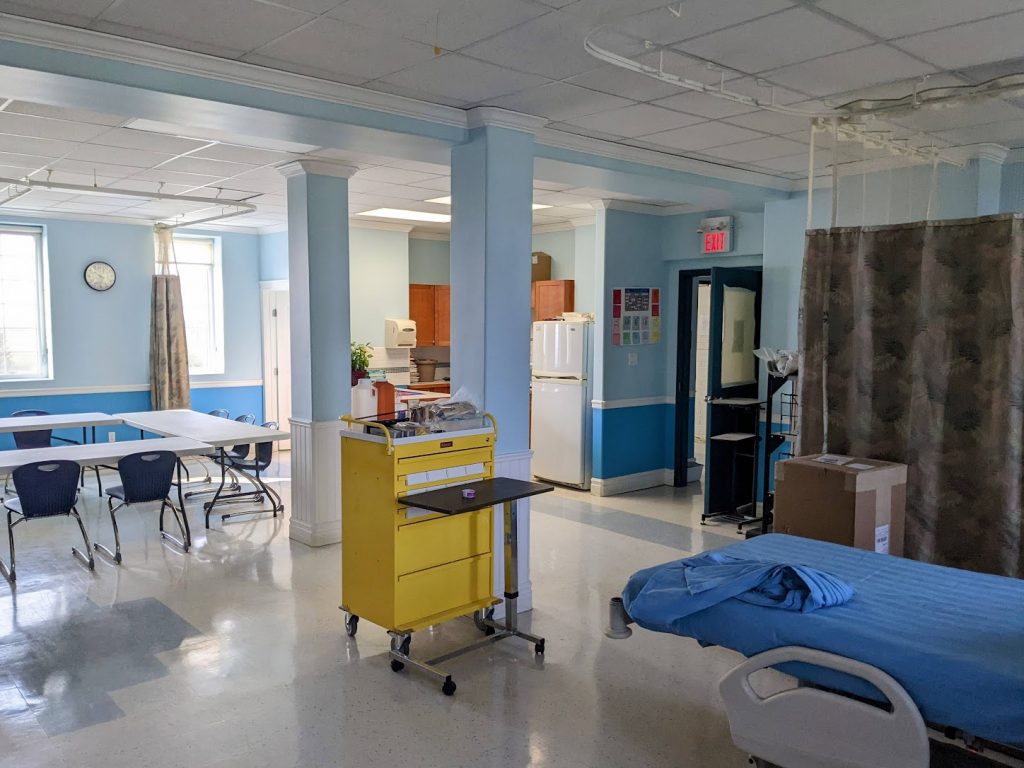
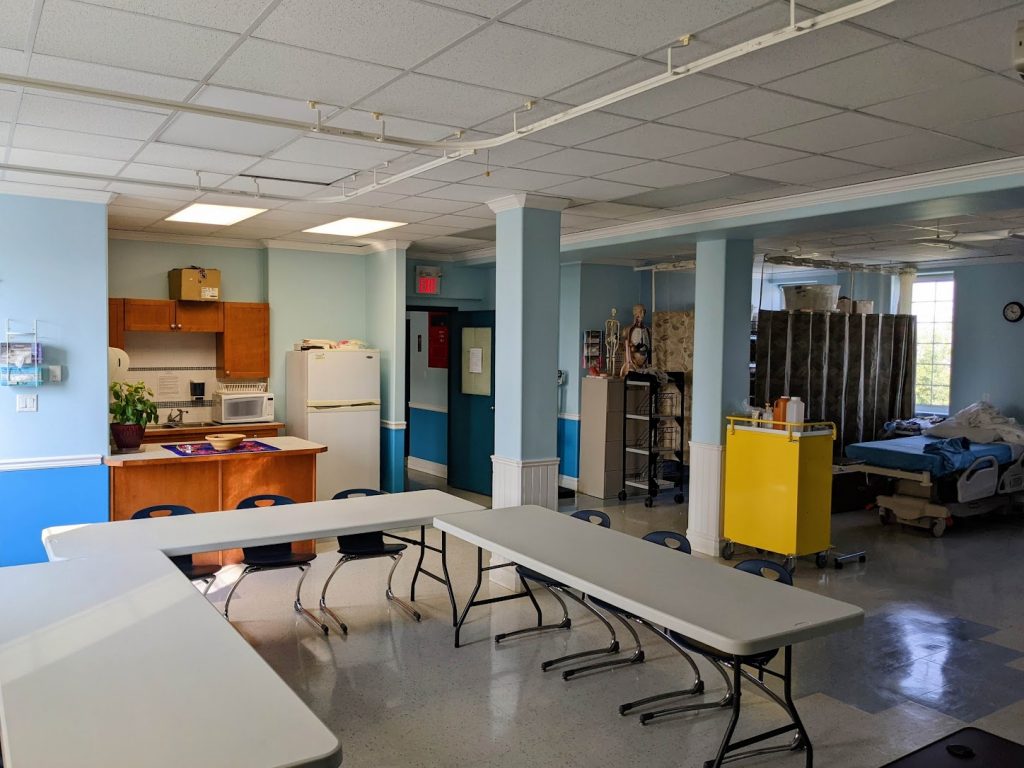
Laser scanning data can be used to create “as built” architectural plans which can support repair and restoration work to Old Sun Community College. This plan was created using Autodesk Revit and forms part of a larger building information model (BIM) of the school. The Revit drawings and laser scanning data for this school are securely archived with access controlled by the Old Sun Advisory Committee.
Some of the threats faced by Indigenous students attending residential schools came from the buildings themselves. The architectural plans contained in this archive, which have been constructed using the laser scanning data, illustrate how poorly these schools were designed from a safety perspective. There were three specific areas that placed the health and safety of students at great risk: Fire Hazards and Protection Measures; Water Quality, and Sanitation and Hygiene. As you explore the archive, you will find more information about the nature of these hazards and their impact on students.

Donna Axe Running Rabbit- Finally I Got Fed Up
On the second floor, that was our room. That was juniors, that was junior girls. I slept on top, we had bunk beds, and my late sister Jenny slept on the bottom. I would whisper to my sister when we go to bed, “go use the bathroom” so that way she would not get strapped, so she does go. But, I don’t know, other times she forgets to go use it and she would pee in bed. I would wake up during the night to hear areal hard slap from that Mrs. Maguire to Jenny. I would jump off the bunk bed and I would grab Jenny as she was crying loudly, and again I would tell Annie Maguire that I would tell my mother. She would just look at me. There was a lot of abuse in there, hitting. But I never witnessed anything about sexual abuse or anything like that.
There was one in there, one supervisor her name was Miss Nash. I remember her she was a big lady beautiful lady; she was very kind to us. She was from BC, I think she was from BC. She would tell us about Annie, that she was a mean person and all. And that she would be right in there with Mr. Brown and then we would tell Mrs. Nash, “how come she is doing that why, why does she have to listen?”
She said, “that white lady, we try and talk to her to say not to listen to Mr. Brown, but Mr. Brown must tell her what to do. To do this and that to the students” and its always Annie.. it’s always Annie. I was not scared of her at that time [laughs]. But I was scared for the rest and finally I got fed up, I think when I was nine years old. I started to run away from here. A friend of mine, her name was Daphne Black Horse… I would run away from here with her. Daphne was scared of them because Annie would be yelling our names very loud and she would be using the F word, that “we should f***ing get back here to the boarding school!” Then we come back, and we would get strapped and again we would get hit on the head with her knuckles, pulling our hair, and our ears… pulling our ears, holding our ears right up to the room.
And another thing about at that time me and Daphne, we never, never ever got Christmas gifts. Never ever, till it closed because it was always Annie. That’s all I can remember…
– Donna Axe Running Rabbit
Notes:
Oral interview with Donna Axe Running Rabbit. Conducted, translated, and transcribed by Angeline Ayoungman. Old Sun Community College, April 4, 2022.
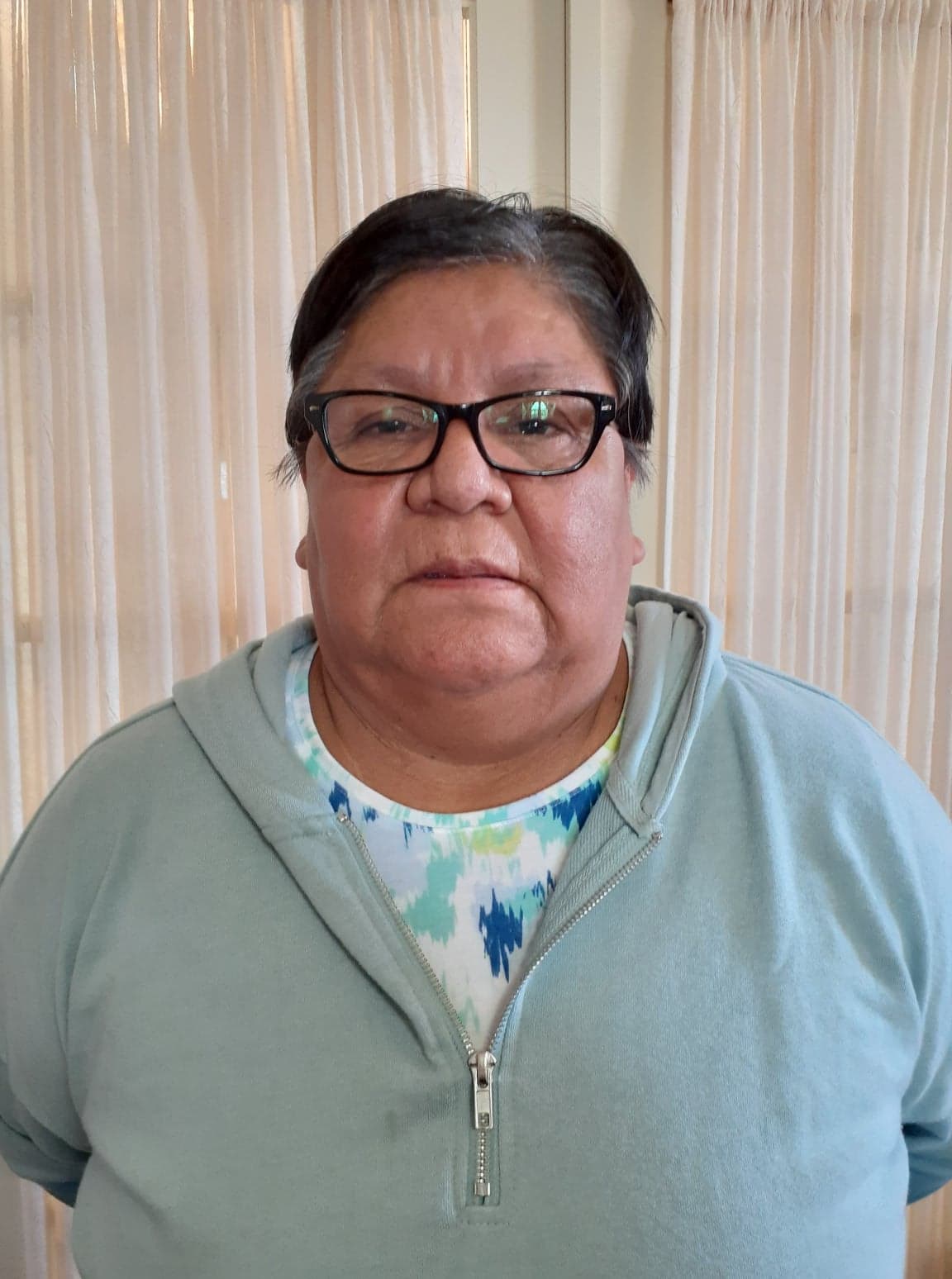
Explore Floors and Rooms
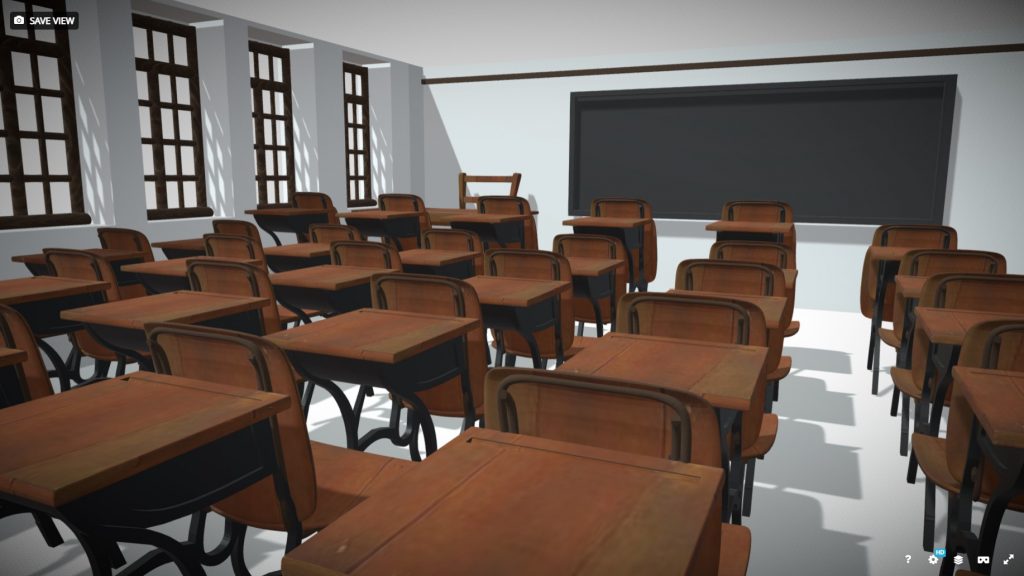
Old Sun Classroom
This computer reconstruction approximates how clas…
Read more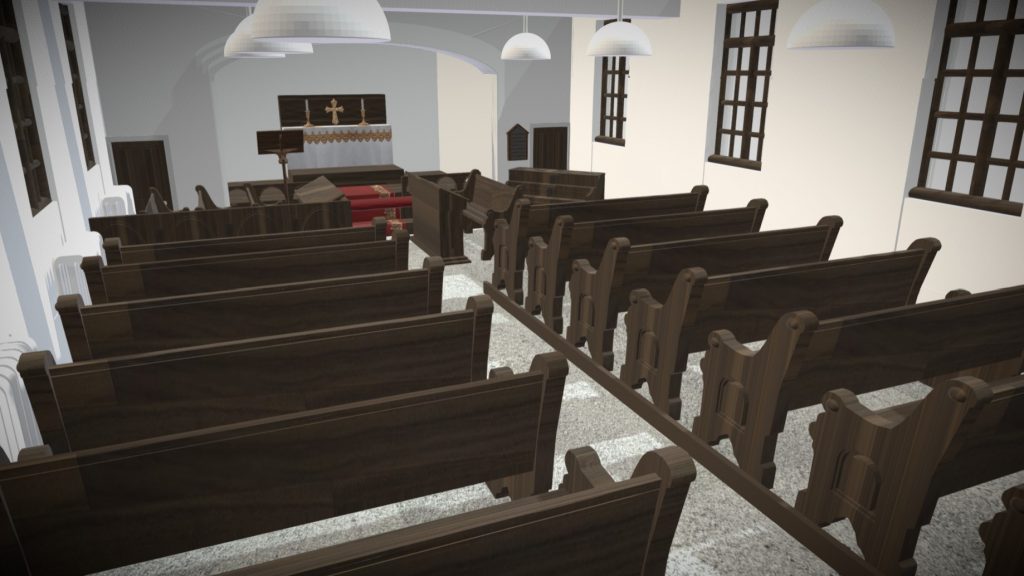
Old Sun Chapel
This computer reconstruction approximates how the…
Read more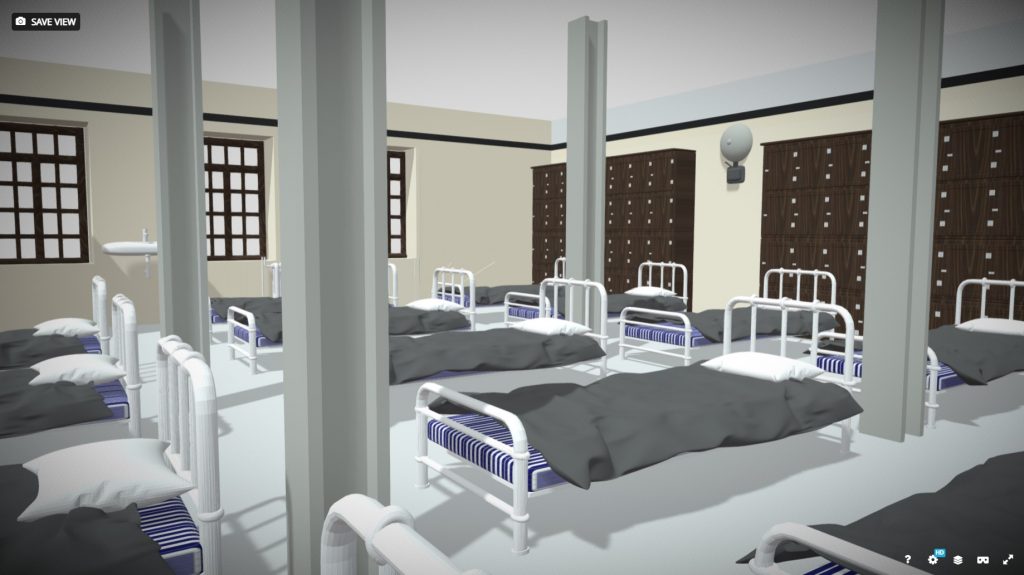
Old Sun Junior Dormitories
This computer reconstruction approximates how the…
Read more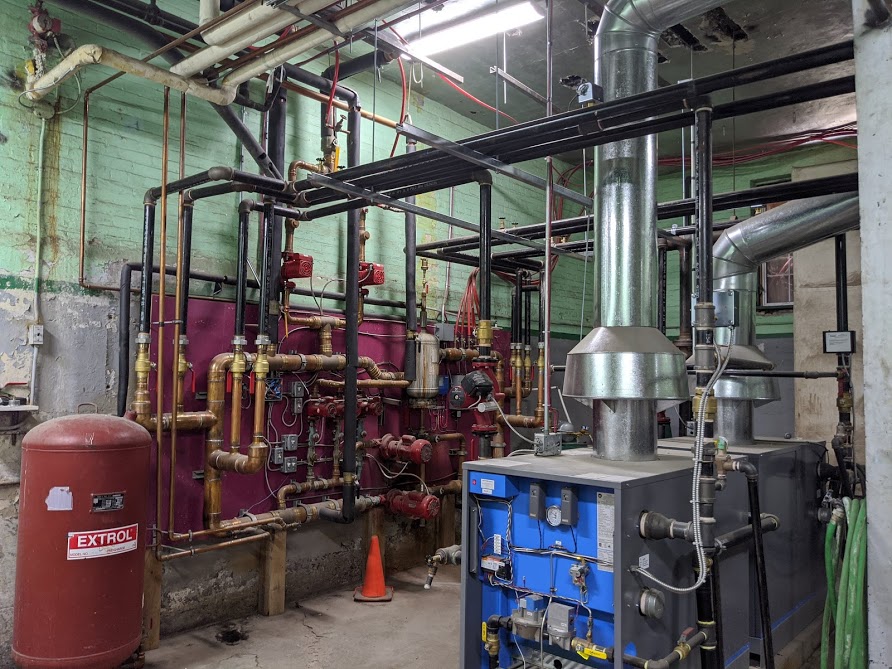
Old Sun Boiler Room
The boiler room and former coal shoot at Old Sun C…
Read more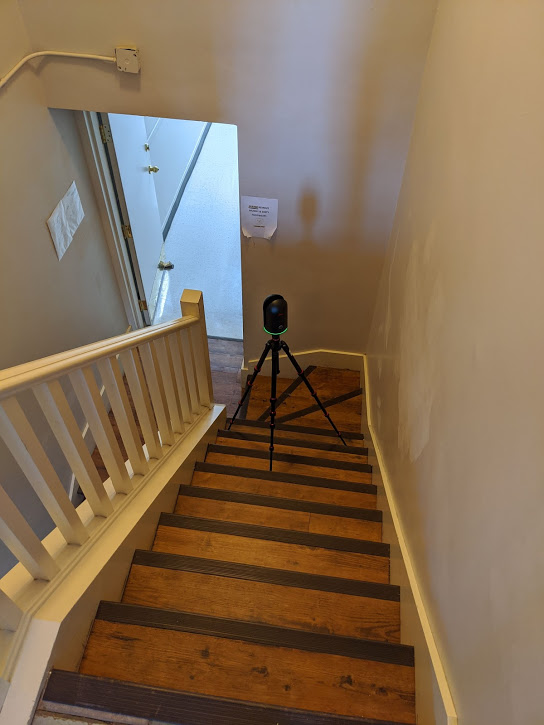
Old Sun Annex
The Annex at Old Sun Community College. This Area…
Read more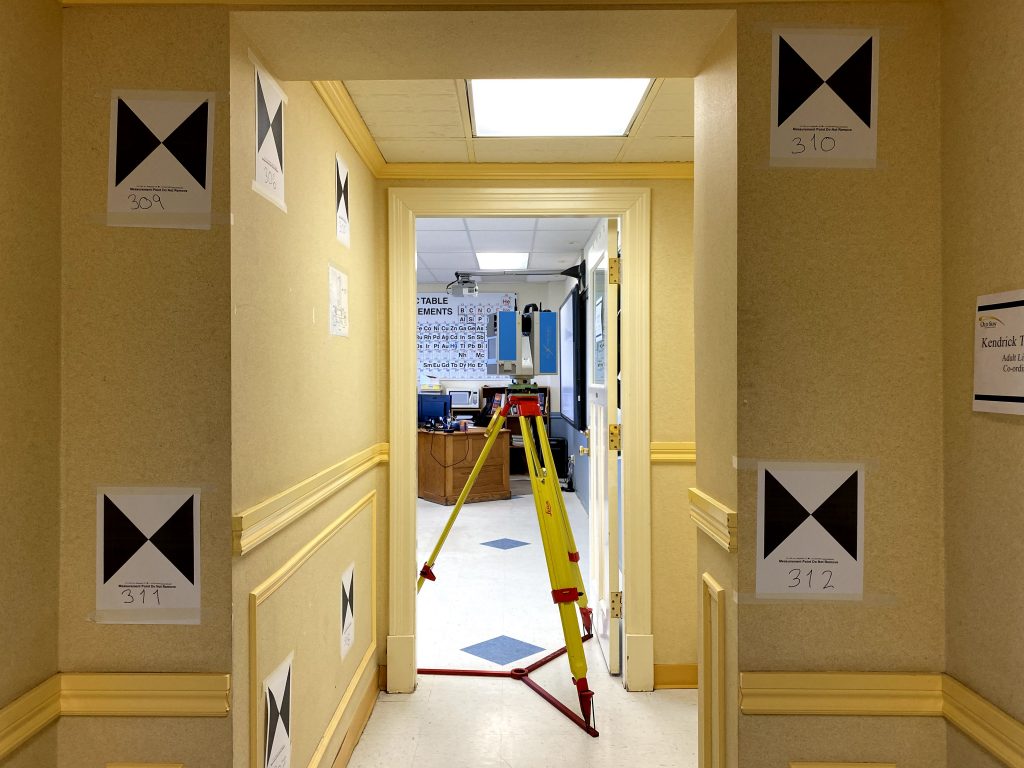
Old Sun Community College Third Floor
The Third Floor of Old Sun Community College (OSCC…
Read more
Old Sun Community College Second Floor
The Second Floor of Old Sun Community College (OSC…
Read more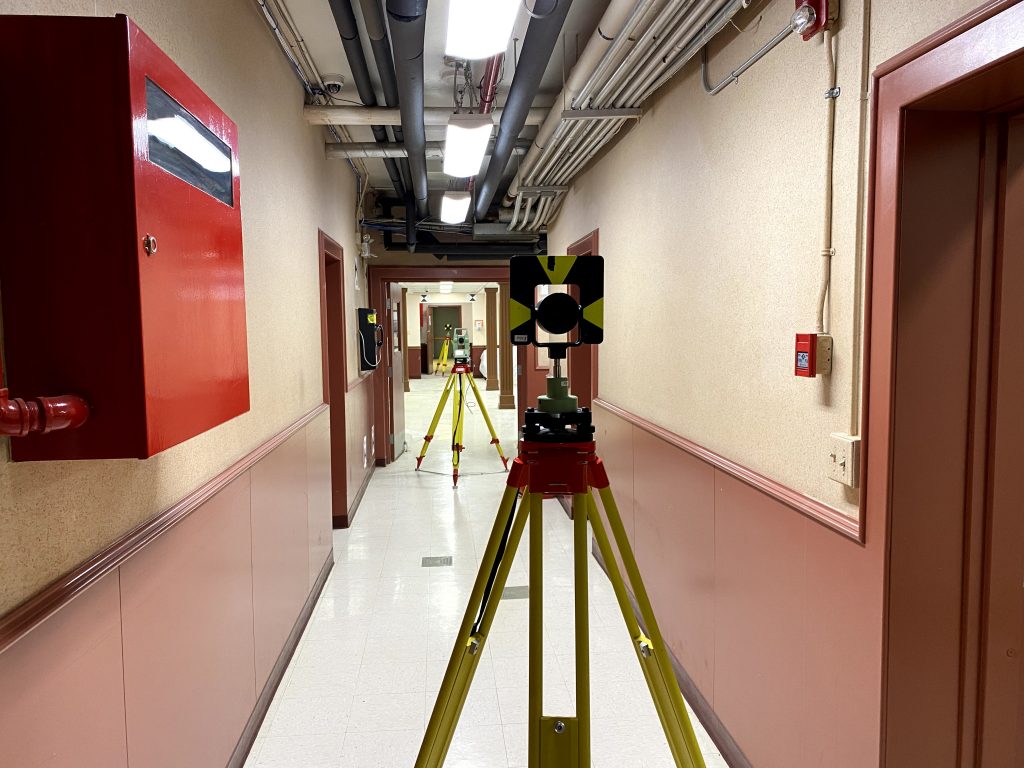
Old Sun Community College First Floor
The First Floor/Basement of Old Sun Community Coll…
Read more
Exterior of Old Sun Community College
Old Sun Indian Residential School operated between…
Read more